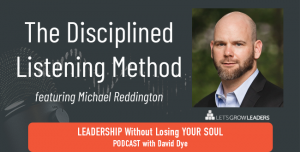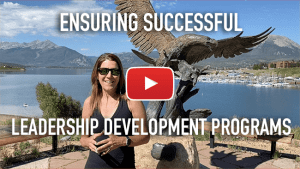David Dye's Blog, page 40
January 3, 2023
Inspiration and Strength: What Inspires You and Give You Hope?
Share Their Sources of Inspiration and Strength
As 2022 draws to a close, I’m curious, what’s been a source of inspiration and strength for you this year?
In our final #askingforafriend of the year, I share some savvy inspiration from human-centered experts, and I’d love to add yours to the mix. I’ve been collecting these thoughtful clips and put them together in the video below so that you can pull the best of the best from our 2022 content…and jumpstart your 2023 with human-centered inspiration.
For me, a massive source of inspiration and strength has been being able to deeply connect with people, build new relationships, and strengthen important bonds with friends and family.
We were forced to get creative in how we connect with each other over the last two years, and I’m grateful for the technology to do that. And a huge source of inspiration and strength was being able to reconnect in person– which I realized how much I cherished and really need in my life.
Our clients have massively inspirated us this year…we are so grateful to receive their trust and establish these important partnerships to grow leaders.
So where do these powerhouse leadership development experts source their inspiration and strength? Listen in to find out!

Marchall Goldsmith, author of The Earned Life and leadership coachJulie Winkle Giulioni, author of Promotions Are So Yesterday, speaker and consultantAmer Kaissi, author of Humbitious, professor and executive leadership coachJess Pettitt, author of Good Enough Now, and diversity and leadership speakerColin Hunter, author of Be More Wrong and leadership coachChad Littlefield, author of Ask Powerful Questions and speakerThomas Wedell-Wedellsborg, author of What’s Your Problem and innovation specialistJennifer Moss, author of The Burnout Epidemic, speaker and workplace culture strategistJean Marie Digiovanna, speaker, trainer and coachWhitney Johnson, thought-leader, keynote speaker, executive coach, and consultantRita McGrath, author of Seeing Around Corners, speaker and consultant
What would you add? What’s been a source of inspiration and strength for YOU this year? Comment below and let me know.
Other related articles:
A Better New Year at Work? A Fresh Start to Deeper Human Connection (letsgrowleaders.com)
What are You Noticing? Insights and Observations as the Year Comes to an End (letsgrowleaders.com)
The post Inspiration and Strength: What Inspires You and Give You Hope? appeared first on Let's Grow Leaders.
January 2, 2023
A Better New Year at Work? A Fresh Start to Deeper Human Connection
-including deeper human connection
The shift to remote work and hybrid teams has left many people longing for deeper human connection. And even for those who’ve returned to the office (or never left in-person work), a few years of “choosing our bubble” has left many of us feeling unmoored.
But, how do you ask for what you need, without appearing needy? The new year provides a natural opportunity to invest in a deeper human connection with your team, your co-workers, and your manager. The benefits are tremendous.
Today we share some tips for opening this conversation.
Why Human Connection Matters: Do You Really Need a Best Friend at Work?There’s a reason Gallup includes the question, “I have a best friend at work” among its top 12 drivers of employee engagement.
When you have a best friend at work, you’re more likely to feel supported, encouraged, and appreciated. And (you know we love this stat), employees with a best friend at work are 27% more likely to report that their opinions seem to count at work.
Apparently, best friends at work are great courage encouragers.
Even if you have plenty of friends in other areas of your life, there’s a proven connection between human connection and trust. Most of the trust research cites connectedness or “intimacy” as a key component of trusted relationships. It’s hard to trust people we don’t know.
Why It’s Harder NowEvery day we hear concerns about how the lingering feelings from pandemic-induced isolation make their team feel less connected. Most people tell us having a best friend at work is harder now.
“I joined my company in the middle of the pandemic, and now we’re staying fully remote. I’ve yet to be in the same room with anyone on my team.”“People hardly even turn their cameras on anymore. It’s hard to feel a human connection staring at a bunch of black boxes.”“It’s not the water cooler I miss. I mean, we didn’t even have an actual water cooler. But I find it harder to get quality one-on-one time with my co-workers in this hybrid team. I have my virtual one-on-one time with my boss, and that’s good. But I miss the other human connections.”“We’ve downsized and now we’re all slammed with extra work. No one seems to have time for casual conversation. And yet, I think we need that now more than ever.”“We all just race from one virtual meeting to another. Technically, I spend all day talking with people. But at the end of the day, I yearn for human connection.”“We used to get together for offsite meetings, but even our end-of-year meeting was virtual this year. I miss people.”“I thought that when we returned to the office, I’d feel more connected. But not much has changed. Honestly, I wonder why I bother making the commute.”How to Ask For What You NeedThis isn’t an article about the pros or cons of hybrid work, or when to bring people together for what. We’ve got lots of thoughts on how to do that deliberately and well (see 6 habits of highly effective remote and hybrid teams and some ideas for bringing people together for team innovation).
that deliberately and well (see 6 habits of highly effective remote and hybrid teams and some ideas for bringing people together for team innovation).
It’s about encouraging courage to ask for the human connection you need.
We’re writing this because we’ve heard from so many people who feel isolated and alone at work but feel like “no one else” seems to have an issue.
As one manager put it, “What if I reach out and ask for more time to get to know people and they say no? That would make me feel even worse.”
So today, we offer a few starting points to invite a deeper connection when you yearn for more.
How to Invite a Conversation About Deeper Human ConnectionOf course, there are lots of ways to have this conversation. The best way to ask for what you need is to ask for what you need. But, if you’re feeling awkward or alone, here’s an approach that might help.
1. Ground your ask in business outcomesIf you’re concerned with looking needy, you can ground the conversation in the desire for team success or business outcomes.
For example:
“I’ve been thinking about how we can accelerate our teams’ performance in the new year. And I realized how little we actually know about one another. It strikes me that understanding and knowing a bit about one another’s strengths and priorities could really help. How would you feel about setting aside some time in one of our team meetings to get to know one another a little more?”“I really care about the success of this team and have some ideas about how we can collaborate more in the new year. I’d love to hear yours. Can we set up some time to talk?”“We depend on one another a lot on this team, and sometimes I think we shy away from conversations we need to have because we don’t know one another all that well. I think there could be real value in starting the new year by building a deeper human connection. Here are a few conversation starters that can help. What else do you think we might do?”2. Invest in one relationship at a timeIf starting with a team conversation feels overwhelming, another approach is to invest in one relationship at a time. What if you were to identify three people and invest in making a deeper human connection with them in the new year?
A few conversation starters.
“It’s been a tricky few years, and we’ve all been so busy. I realize how little I know about you as a person. I’d like to change that. Would you like to go to lunch (or have a virtual coffee) to get to know one another better?”“I admire the work that you do, particularly your approach to _________. I wonder if we could set up some time to learn more about one another, our work, and how we might help one another.”“My new year’s resolution is to get to know my co-workers better.” Would you like to have lunch (a drink, or a virtual coffee)?3. Balance being interested AND interesting One of the biggest challenges we hear from people feeling a lack of human connection at work is that their relationships feel too one-sided. It’s easy to fall into a pattern of being overly other-focused—very interested in learning about other people, but not sharing much about yourself.
One of the biggest challenges we hear from people feeling a lack of human connection at work is that their relationships feel too one-sided. It’s easy to fall into a pattern of being overly other-focused—very interested in learning about other people, but not sharing much about yourself.
 Or to err on the other side of telling people more about yourself without being genuinely curious about what’s important to them. Read more in Authenticity Leadership: 5 Big Mistakes that Can Derail Your Influence.
Or to err on the other side of telling people more about yourself without being genuinely curious about what’s important to them. Read more in Authenticity Leadership: 5 Big Mistakes that Can Derail Your Influence.
One of the best ways to make deeper human connections is to show up being both interested and interesting whenever you can.
Your TurnGenuine human connection doesn’t happen overnight, and it takes deliberate effort, particularly in a remote or hybrid team.
And, it matters.
If you’re feeling at all isolated or disconnected, we encourage you to take the first step to find the others who might yearn for this too.
We would love to hear from you. What are your best practices for fostering genuine human connection at work?
The post A Better New Year at Work? A Fresh Start to Deeper Human Connection appeared first on Let's Grow Leaders.
December 26, 2022
The Best Leadership Articles of 2022 (according to you)
Every year, we count down the best leadership articles of the year, according to your reading and sharing. Thanks so much for being a part of our human-centered leadership development community and for all you do to encourage courage!
We would love to hear from you in the comments. Which leadership article resonated most with you and why? What leadership topics are of most interest to you in the coming year?
Top 3 Let’s Grow Leaders Articles of 20221. How to Say No at Work: Powerful Phrases to Stand Your Ground
Our number one most-read article in 2022 is on how (and when) to say no at work. And with the ever-growing demand placed on leaders and managers, it’s no surprise that being more strategic with your “No” piqued interest.
If you missed this article, it’s never too late to use these 5 steps to feel more confident in what you’re saying no to and why.
2. Email Best Practices: How to Send a Better, More Effective Email
When you’re working in a remote or hybrid team, having a common agreement on your email best practices will save you gobs of time and frustration. Use these 5 best practices to send better, more effective emails.
3. How to Build a High-Performing Team: Ten Vital Conversations
Every truly high-performing team has one thing in common: They spend time in candid conversation talking about what’s working and consistently look for ways to improve. Get ten important questions to start with when building a high-performing team.
If you are looking for a structured way to have more meaningful conversations with your team in the coming year, we would love to set you up with a demo of our new Team Accelerator Program. Click here for more information.
Other Very Popular Leadership Articles4. How to Help Your Team Think Bigger – Let’s Grow Leaders
It’s a frustration we hear all the time: “Our managers think too small! How do we help people REALLY CONSIDER what they’re doing–to look for better ways to work smarter? They do their work, but we can’t seem to help them think bigger.”
Use the two questions shared in this post and follow with three steps to engage your team in the process of thinking beyond doing.
If you’re looking for other ways to help you and your team think bigger, check out our strategic leadership and team development programs. Or, download our FREE eBook, 7 Practical Ways to Be a Bit More Daring.
5. 3 Leadership Values to Encourage in Every Member of Your Team

We’ve been asking this question of the leaders we work with around the world. Consistently, compassion, courage, and curiosity continue to top the list, closely followed by flexibility and authenticity. Learn how to deepen your team’s skills in three values for leaders to encourage in every member of your team.
6. How to Be Less Negative – and Still Be Yourself
Are you often told “don’t be so negative” – but you don’t THINK of yourself as negative? It can be really frustrating when your good intentions are misunderstood. Try these 3 easy shifts to help you bring your best qualities to every team and conversation.7. Ten Common Mistakes New Managers Make
This article was truly considered one of the best leadership articles of the year. It was just published in December and had only a few weeks to make the list.
8. True Gratitude – More Than Pleasantries or Recognition
True gratitude begins with deep humility. It changes us. True gratitude transforms our relationships and it changes the game. Learn what gratitude isn’t and get three practical ways to practice true gratitude.
And … What You Consider Our Best Leadership Articles of All Time (Most Popular)We’ve been blogging since 2012, so it’s interesting to see which topics continue to resonate and show up on the best leadership articles list year after year.
Great mid-year review questions to make your team stronger
Funny story about this one. My son, Ben, is a manager at the University of Maine, looking to do a great job with his mid-year review. So, he googled “mid-year review questions.” Apparently was halfway through the article when he realized his mama had written it. These powerful questions will help you engage in better conversations and deeper dialogue.
And although it didn’t make the best leadership articles list this year, this post on How to Respond to Frustrating Performance Feedback. If your manager struggles with giving reviews well, this article can help empower a deeper conversation.
7 Ways to Help Your Team Deal with Ambiguity – Let’s Grow Leaders
As a human-centered leader, helping your team deal with ambiguity well is one of the most important ways to spend your time when things are uncertain. Use these seven ways to help your team deal with uncertainty, and get more creative in their problem-solving.
19 Questions to Help Grow Confidence in Children
Questions are a remarkable way to grow confidence in children. Great questions work because they cause children to stop and think. Asking any one of these questions can be the start of a great conversation and of course, it gives you a remarkable opportunity to listen well. Nothing builds confidence faster than truly being heard.
Best Leadership Articles Published ElsewhereWhy do leaders embrace culture acceleration? Because it’s a high-ROI engagement that achieves multiple business outcomes. One of our most popular featured articles from the ATD Blog on How to Leverage Leadership Development to Accelerate Culture Change.
And the next most popular article is How To Create A Culture Where Silence Is Not Golden featured in Forbes.
Leadership without Losing Your Soul Podcast (With David Dye)The most popular episode (and one of David’s favorites too) was this inspiring conversation: Get Things Done in a Bureaucracy with Marina Nitze and Nick Sinai
Another popular Interview (and one David highly recommends) is The Disciplined Listening Method featuring Michael Reddington
And the #1 content podcast this year reflects some of the stress leaders and their teams have felt this year: Being a Human-Centered Leader When You’re Stressed or Anxious
Asking For a Friend Vlog (With Karin Hurt)Most popular. Questions to ask before launching a leadership development program from Lake Dillon, CO.
If you prefer a written version of these questions (and an additional Asking for a Friend Interview) you can check them out here.
Most popular interview, Is it possible to re-recruit an employee when they already have one foot out the door? Interview with Bev Kaye from the ISA conference.
Check out the last few years’ “best leadership articles” lists.
Best Leadership Articles of 2021 (According to You)
Best Leadership Articles of 2020 (According to You)
The post The Best Leadership Articles of 2022 (according to you) appeared first on Let's Grow Leaders.
December 23, 2022
Relatable Leadership with Marisa and Simon Cleveland
Have you ever wondered how the most admired leaders live? In this episode, Marisa Cleveland and Simon Cleveland draw on their combined forty years of experience in corporate, government, and higher education leadership to answer this question. Through anecdotes and interviews paired with actionable takeaways, they investigated where leaders start, how they become boxed in upon entering the workforce, and finally how they can break through those boundaries to become a culturally agile leader and a meaningful contributor to our global society.
This episode offers a practical guide for leaders who recognize how critical it is to draw outside the lines of typical guidance in order to rethink leadership development and gain competencies that make them more inclusive, culturally aware, and empowered to facilitate collaboration. Get the tools you need to make leadership part of your lifestyle.
Relatable Leadership
06:12
When we talk about relatable leadership, what does that mean?
07:16
The difference between leaders who are able to relate to others, and who others are able to relate to. And who influence others and are also influenced by others.
15:14
What are the five characteristics of what relatable leadership should include?
26:33
How the emerging leader handles compassionate communication in comparison to the established leader.
30:35
Helping a report step into a different role or out of the organization from a place of caring.
31:59
Why do relatable leaders view leadership as non-hierarchical?
35:09
Continuity of character and behavior shifts across every aspect of our life is what’s needed to become a relatable leader. Leadership that does not treat people on our team differently than we’re treating people in the community or our family or on a committee that we serve or any of that sort of thing.
41:40
If you can understand that there’s not one path to get to where you need to be, then you’ve opened up the door for listening to other pathways that may still get you to that successful point.
Connect with Marisa and SimonInstagramTikTok
Marisa’s TwitterSimon’s TwitterWebsite Get the Book

The post Relatable Leadership with Marisa and Simon Cleveland appeared first on Let's Grow Leaders.
December 19, 2022
How Did Leadership and Culture Improve on the North Pole?
Is there anyone more beloved than Santa Claus? Today, the North Pole is a paragon of human-centered leadership and culture. But it wasn’t always that way.
In fact, Santa has a lot to teach us about leadership. You might have a fantastic personal brand and a world-renown altruistic mission, but that doesn’t mean you can ignore your leadership and culture. The North Pole used to be a very different place…
Nearly sixty years ago, the Rudolph the Red-Nosed Reindeer television show documented the poor leadership and culture at the North Pole. Santa, Donner, and the head elf had created and took part in a toxic culture of ridicule that led to poor performance.
Donner rejected his son because of his nose. Santa ignored Rudolph’s obvious talent and leaping ability because of the red glow. And the head elf ridicules Hermey’s aspiration to be a dentist.
The North Pole’s leadership and culture at the time was a great example of what we call “trickle-down intimidation.” The leaders take their cues from what happens at the top. Santa’s leadership led to dysfunction at every level. The toxic courage-crushers got so bad that the North Pole lost some of its top next-generation talent as the victims of the abusive leadership looked for opportunities elsewhere.
There’s a lesson for leaders in what happened all those years ago. When people have to use all their courage just to survive harassment, ridicule, or being overlooked for bringing their authentic selves to work, they can’t possibly bring creativity or innovative solutions to their work. They’re too busy surviving.
The North Pole Today: Can Leadership and Culture Change?In this human-centered leader TV exclusive exposé, Karin Hurt asks hard questions to find out what has changed – and how.

We were so happy to find out Santa’s a fan of Courageous Cultures. In our world of rapid change, a courageous culture is your competitive advantage.
Start by eliminating toxic courage crushers. Then, invest in leadership and culture where leaders consistently show up with curiosity, ask people for their ideas, and build an infrastructure for courage. You’ll be on your way to high performance, high engagement, and teams who consistently share ideas, and solve problems, with leaders who reward contributions from all levels.
By the end of that frosty Christmas Eve, Santa had seen the worth in every member of his team and encouraged Rudolph’s true strength, competence, and talent. Performance soared.
The North Pole leadership team built a culture where Hermey could bring his best self to work and everyone would eventually benefit from the dental care. And if you have a team member whose ultimate passion lies outside of your work, support them. How can you help them learn all they can while contributing now? The message it sends to your team about your loyalty and commitment to them will come back many times over. (Not sure about your people’s goals? Use this Developmental Discussion tool to find out!)
Your TurnSanta’s leadership is a cautionary tale for every leader. Do you build on your team’s talents, strengths, and competence or do you waste time, energy, and capacity focused on irrelevant “weaknesses”? Have you allowed a caustic culture of shame, blame, or intimidation to take root?
If so, Santa also shows us a positive path forward. Leadership and culture can change – and it begins with you.
Do you have the culture you want? If not, how can you avoid Santa’s leadership problems? How can you focus on the talents your people bring to work? And not obsess about the characteristics they don’t have (that don’t matter)?
The post How Did Leadership and Culture Improve on the North Pole? appeared first on Let's Grow Leaders.
December 16, 2022
Leading Step by Step
I fell asleep at 1:00 AM sandwiched between strangers on my right and my daughter to my left. Whatever challenge you face, leading step by step, little by little, or poco a poco, will help. You don’t have to know all the answers or how everything’s going to turn out. And you don’t have to know how to do everything you’ll be called upon to do. Just find the tracks of the people who’ve gone before and take it step by step, poco a poco.
Hey, it’s David. And you’re listening to Leadership Without Losing Your Soul. Your source for practical leadership, inspiration tools, and strategies you can use to achieve transformational results without sacrificing your humanity or your mind in the process.
Welcome to the show. As we open season 12 here, continuing the last episode’s theme of getting small. I’d like to share a moment with you from Tomorrow Together: Essays of Hope, Healing in Humanity. I had fallen asleep at 1 o’clock in the morning sandwiched between strangers to the right, and my daughter to the left, in a tent. And those strangers were a nice couple from Brazil, or at least whatever they said in Portuguese sounded nice and they smiled when they said it. So all four of us were cocooned in borrowed sleeping bags below the summit of Acatenango, which is the third tallest volcano in Central America.
So how’d we get there? Well, after my daughter Avery finished college, she moved to Guatemala where she founded a socially conscious clothing and textile production company. When I was able to take a week to visit her, she knows I like to hike and said, Hey, there’s a big dorm of a volcano here. We should hike up it. Well, I’m always up for a hike and a good time with my children so I said, sure. She signed us up, then emailed back with the details, oh, this isn’t a day hike, it’s an overnight hike. It’s a guided backpacking experience and there are lots of medical forms and liability waivers.
Well, it’s a chance to follow the music, and spend some time with my daughter. And that’s how I found myself on the side of a central American volcano. The day before we’d spent the day trudging up the volcano carrying these backpacks that were a fraction of our body weight. The heavier you are, the heavier your backpack and mine weighed 50 pounds. I think it’s a cruel irony to give a guy who already had more weight to carry a heavier backpack. It’s like some kind of reality, TV-inspired weight loss incentive program or something.
I was also older than everyone else in the group by at least 10 years. I asked if there was a backpack weight reduction based on age. They just laughed. So we spent the day climbing through ash-enriched fields of coffee, flowers, and avocados through a cloud rainforest and into a dry ghost. Forest of ash-choked trees that had been killed by some old eruption. We set up camp 1000 feet below the summit. The plan was to get a good night’s sleep, get up early, and then reach the summit in time for a beautiful sunrise. And I thought sleep would come easily after the day’s work but that was not the case. My body was exhausted, but I couldn’t fall asleep.
The couple from Brazil, no problem, they were asleep in minutes. I finally conked out at one o’clock. Three hours after sleep finally came, a bright light shines through the window of the tent and there’s a gruff voice calling out. It’s time to go. So by 4:30 in the morning, Avery and I are hiking up a steep incline in the dark on a crumbling trail through foot-deep powdery volcanic sand. And each step was a torturous effort to find a foothold before you slid back down the slope. Oh, and I’d left my flashlight in the tent. So we hiked up that steep sandy slope, mostly in the dark for two hours. Despite all the mountains that I’ve hiked, this was the most grueling and mentally challenging ascent I had ever done. Trails in the US use switchbacks to ease the pain of elevation gain and to manage erosion, but they haven’t really found their way into Guatemala mountaineering yet.
The lack of sleep and food that didn’t agree with me also did not help. And did I mention I was older than everyone else in the group? Have you ever found yourself in the middle of a difficult challenge with thoughts like, what am I doing here? What was I thinking? Thinking I could do this? What if I can’t make it? Every person who ever chooses to do or be something more or different than they are now is gonna experience those doubts. They’re part of the price you pay by 5:30 in the morning at 12,500 feet. Avery and I were completely alone. The younger and fitter group members with lighter backpacks had gone on ahead of us. It was a different sort of alone than I’d experienced before in a foreign country, with no idea how much farther we had to go or how difficult the trail would become.
My daughter’s small flashlight and the partial moon were the only light we had in the dark. So Avery picked out the trail ahead of us. She would stop, shine her light, and look for the footprints of people who had climbed up the sandy trail before us. Then we’d scramble up another 20 feet, 30 feet, stop, catch our breath and do it again. Avery also hadn’t slept well and was feeling pretty lousy at this point. Apparently, I snore, but the Brazilian couple slept through it. I’m just saying. She told me I should go ahead and she’d catch up. No way, I said, we’re in this together and every few minutes I try to encourage her and lift her spirits. And when she’d had enough of that, she said, stop talking to me. To which I responded, Hey, this was your idea. So we trudged on in silence for a while, our spirits flagging.
That’s when a guide from another group caught up to us. He was Guatemalan and obviously accustomed to trekking up and down these mountains. And as he passed us he smiled, waved his hand in a huge cheer arc of greeting completely at odds with the expression on our faces, and said poco a poco, and then he was gone. His smile and his 0% body fat legs floated over the mountain like it was nothing.
Poco a poco that’s little by little or as I translate it step by step. I often think of his poco a poco. Whatever challenge you face, poco a poco will help. Look at the path immediately in front of you. Find the tracks of the people who’ve gone before and take the next few steps. You don’t have to know all the answers, you don’t have to know how everything’s gonna turn out. You don’t have to know how to do everything you’ll be called upon to do. I don’t suggest that the work is going to be easy.
Avery and I didn’t talk to each other for an hour or more while we were laboring up the rim of Acatenango. And at times the trail was so steep, I would literally take three steps, secure my footing, and then stop to breathe. But we made it and so will you. And one thing I can promise is the view is worth the work to get there. That was easily the most spectacular sunrise I’ve ever seen in my life. A blanket of clouds below us enveloped the cloud rainforest that we hiked through earlier the day before. Volcanoes poked through the clouds, some of them in the distance, spewing ash and smoke from ongoing eruptions and the Sunrise, illuminating all of it. The journey will change you. You’ll know you’ve done it and that you can do it again.
Until next time, be the leader you’d want your boss to be.
The post Leading Step by Step appeared first on Let's Grow Leaders.
December 12, 2022
After the layoff: How to support your team when it just got smaller
After a Heartwrenching Layoff
My LinkedIn feed and email inbox are filled with news of layoffs and reorganizations causing unexpected career turbulence. And I’ve had more than a few phone calls from really talented human-centered leaders hurting for the team members they’ve had to lose and deeply concerned about those who remain after the layoff.
Leading through a layoff is one of the most unnerving challenges you can face as a manager. There’s the initial shock, the communication, the “I wonder if I’m impacted too” angst, and of course, the really painful decisions involved in selecting who will go.
What’s equally difficult is helping your team recover, establishing a new normal, and figuring out how in the world you’ll get it all done with fewer people.
If you’re going through or recovering from a layoff, first let me say, I’m sorry. I know it’s hard.
Getting Real with Your Own EmotionsYou care about the humans on your team (those who are gone and those who remain); perhaps you’ve also watched some peers go too. You might have some survivor guilt. Or, it could be you are worried about how to sustain momentum with a reduced staff. And, of course, there’s the matter of rebuilding morale.
Not to mention, we’re already fragile right now. The chaos of the last two years is draining and many of us are running low on resiliency reserves.
I’ve been there. There was one dark point in my career when I received a call once a quarter for two years, giving me my Reduction in Force (RIF) numbers. By the end of that run of layoff after layoff, I had half the team I once had serving my growing customer base. And, I had lost some of my best managers-– many of who had become close friends. We managed to sustain momentum, but it wasn’t easy.
I recently ran into one of the managers (Alyssa) who worked on my team at that time at an event I was keynoting. After the hugs, and the catching up, she looked deep into my eyes and said, “That period was really, really hard, wasn’t it? I learned so much about being a leader during that time.”
Me too, Alyssa. Me too.
And, I can only imagine dealing with a layoff on the tails of a pandemic, with a war raging, and all the other unrest that’s making it hard to sleep.
How to Lead Well After a Layoff or DownsizingMuch of what I learned from employee engagement came from that time. You’ve got to be extra connected and extra-human-centered during and after a layoff.
Depending on how the downsizing was handled you might have some stupidity-recovery work to do. If you’re still neck deep in downsizing, read my article, 5 Mistakes to Avoid During a Restructure, to avoid these sadly all-too-frequent mistakes.
If you’ve moved on to the rebuilding stage, here are a few tips that can help.
1. Be as human and connected as possible (gather in person, or at least turn your cameras on)Your team will need extra time and space to process their feelings. And, will likely be extra sensitive to THE WAY things are being communicated as well as what is being said. I can’t tell you how many complaints I get about managers who are perceived as “hiding behind email” during difficult times.
2. Help your team process their feelings“It’s not personal,” is about the worst thing you can say. Of course, this is personal. Losing your job is stressful under any circumstance. And it’s likely people on your team have good friends caught up in this process on top of some other traumatic stress they’re dealing with. Go slow. Be a listener. Give people the time and space to process what’s happening.
3. Get support (outside of your team)I know it’s hard. It’s tempting to vent to your team as you stare at the mountain of work to do with fewer people to do it. Seek out some trusted advisors and do your layoff venting behind closed doors. Your team needs to feel confident that you’ve got a path forward. Blaming others or cursing the universe only makes it worse.
It’s okay to let people know you’re sad too because you care about the people who are laid off as well as those that are staying. But, resist the urge of going overboard by using your team to process your deep emotions, and find other support to do that (e.g. a mentor or a trusted peer).
4. Support your team members in their job searchDo whatever you can to help your downsized team members land well. It’s the human, decent thing to do for the impacted employees, and it will go a long way in building trust and loyalty with those who remain after the layoff. Even once they’ve left your company there are plenty of ways you can help with networking and other support.
Nothing feels better than helping a great employee caught up in a bad twist of fate land well.
5. Let your remaining high-performers know how valued they areThere’s no question, downsizing makes everyone a bit twitchy, particularly when cuts involve strong contributors who just happened to be in the wrong chair when the music stopped. Be sure your “A” players know how much you value them and help them see the broader opportunities that are available to them, beyond their current role. Help them develop and expand their competencies to make them invaluable as the company evolves.
6. Work to eliminate and streamline workBefore you assume “Nothing we’re doing is unnecessary,” get your team together and ask (and then don’t let them tell you that “nothing can go” either). Look under every rock for time spent on seldom reviewed reports or redundant processes. You can’t do the same work with fewer people for long without burnout or sacrificing quality. Get serious about what can go.
Our Own The U.G.L.Y. process is an easy way to facilitate this conversation after a layoff.
For example, you may invite your team to consider, “With regard to maintaining our results and customer experience with fewer people on our team…
U- What are we UnderestimatingG- What’s got to GoL-Where are we LosingY- Where are we missing the YesIf you want more information on using the Own the U.G.L.Y. Process or to get other tools to help your team think critically during this challenging time, you can download our FREE I.D.E.A. Incubator Guide.
Help your team focus on what’s most important and support them to say “no” as needed so they can focus on what matters most.
7. Fail Strategically– know which balls can drop (and which can’t)If you can’t find enough work to eliminate, know that some balls are likely to drop (or at least be picked up on the second bounce). Don’t pretend that every goal is equally important, help your team to prioritize. Be sure they know that if they have to screw up something, which of their goals is less critical?
8. Look for help outside of your immediate teamYou’re probably thinking, “Karin, now you’re really talking nonsense, if we’re pressed, so is everyone else after this painful layoff!” I’m sure they are. But I also know that in every organization, there is always redundant work going on. Instead of viewing other teams as the competition, or keeping staff at arm’s distance to get them out of your hair, look for opportunities to partner.
Could you pool functions and create a shared services group? Could you lend resources back and forth during peak times? Have the confidence to know it can be done, and the humility to ask for help.
Downsizing is never easy. I also know that of all the times I thought we’d been cut too far to survive, we somehow did, and in many cases thrived. Leadership is often about restoring hope and doing what feels impossible.
Your turn.What advice do you have for helping your team recover after a layoff or downsizing?The post After the layoff: How to support your team when it just got smaller appeared first on Let's Grow Leaders.
December 9, 2022
What are You Noticing? Insights and Observations as the Year Comes to an End
As the year draws to a close, I’m curious. What are YOU NOTICING? About yourself? About your leadership? Your culture? And, your team?
I always find the end of the year an important time to stop and consider the themes. I love to reflect on what we’re seeing in our work with clients and within our own company at Let’s Grow Leaders.
Today on Asking for a Friend, David and I share this conversation. And, we talk about two patterns we’ve been noticing. We would love to hear yours.

 Teams that have been working remotely are now finding magic and renewed enthusiasm as they meet in person. We’re noticing additional joy and creativity. We’re also noticing a surge of motivation around strategy as they invest in focused time together. People are truly cherishing collaborative time together.
Teams that have been working remotely are now finding magic and renewed enthusiasm as they meet in person. We’re noticing additional joy and creativity. We’re also noticing a surge of motivation around strategy as they invest in focused time together. People are truly cherishing collaborative time together.
We’ve been noticing the importance of this deliberate time together.
Like so many of you, many of our clients have been working mostly remotely for the last two years. And now, they’re adding in-person time. We’re seeing more offsites, leadership training kickoffs, executive leadership workshops, and team innovation events. We see a renewed commitment to strategic planning groups. More companies are spending in-person time together navigating the road to success.
We’re noticing HOPE is powerful in leadership.We’re noticing hope for a better tomorrow. And, hope that improvement is possible.
We talk a lot about innovation, change, and small day-to-day micro innovations that lead to bigger, better company cultures.
This all starts with hopeful leadership. If leaders don’t think better is possible, their team won’t either. Improvement projects might lack the momentum needed for success.
What’s making you hopeful right not? How are you inspiring hope within your team? What have you learned about hope over the last two years? What are you most hopeful for in the coming year?
If you’re looking for more thoughts on hope, David shares even more about healing and hope for humanity in his latest book, Tomorrow Together. When leaders bring genuine hope to their team, it’s contagious (the good kind of contagious ;-).
Together, we can build a better future.
YOUR TURN. What are you noticing right now?
Other articles related to leadership, teams, and company cultureStrategic Planning Tool: How to Engage Your Team in Better Conversation
The post What are You Noticing? Insights and Observations as the Year Comes to an End appeared first on Let's Grow Leaders.
What are You Noticing? Insights and Obserations as the Year Comes to an End
As the year draws to a close, I’m curious. What are YOU NOTICING? About yourself? About your leadership? Your culture? And, your team?
I always find the end of the year an important time to stop and consider the themes. I love to reflect on what we’re seeing in our work with clients and within our own company at Let’s Grow Leaders.
Today on Asking for a Friend, David and I share this conversation. And, we talk about two patterns we’ve been noticing. We would love to hear yours.

 Teams that have been working remotely are now finding magic and renewed enthusiasm as they meet in person. We’re noticing additional joy and creativity. We’re also noticing a surge of motivation around strategy as they invest in focused time together. People are truly cherishing collaborative time together.
Teams that have been working remotely are now finding magic and renewed enthusiasm as they meet in person. We’re noticing additional joy and creativity. We’re also noticing a surge of motivation around strategy as they invest in focused time together. People are truly cherishing collaborative time together.
We’ve been noticing the importance of this deliberate time together.
Like so many of you, many of our clients have been working mostly remotely for the last two years. And now, they’re adding in-person time. We’re seeing more offsites, leadership training kickoffs, executive leadership workshops, and team innovation events. We see a renewed commitment to strategic planning groups. More companies are spending in-person time together navigating the road to success.
We’re noticing HOPE is powerful in leadership.We’re noticing hope for a better tomorrow. And, hope that improvement is possible.
We talk a lot about innovation, change, and small day-to-day micro innovations that lead to bigger, better company cultures.
This all starts with hopeful leadership. If leaders don’t think better is possible, their team won’t either. Improvement projects might lack the momentum needed for success.
What’s making you hopeful right not? How are you inspiring hope within your team? What have you learned about hope over the last two years? What are you most hopeful for in the coming year?
If you’re looking for more thoughts on hope, David shares even more about healing and hope for humanity in his latest book, Tomorrow Together. When leaders bring genuine hope to their team, it’s contagious (the good kind of contagious ;-).
Together, we can build a better future.
YOUR TURN. What are you noticing right now?
Other articles related to leadership, teams, and company cultureStrategic Planning Tool: How to Engage Your Team in Better Conversation
The post What are You Noticing? Insights and Obserations as the Year Comes to an End appeared first on Let's Grow Leaders.
Getting Small
The power of getting small, a small habit repeated daily will transform your life, your team, and your outcomes. This principle holds true and it holds true for your leadership and your work. Where can you get small and be the leader you’d want your boss to be?
Getting Small
What weighs just over a hundred million tons? I’ll give you a hint. It floats, it can fuel a daydream, bring joy or bring death, destruction, and despair.
Hey, it’s David, and you’re listening to leadership without losing your soul, your source for practical leadership, inspiration, tools, and strategies you can use to achieve transformational results without sacrificing your humanity or your mind in the process. Welcome to the show today. It’s hard to believe we’re in season 12 of Leadership Without Losing Your Soul already. And talking about a subject that I think is important for every one of us from a perspective of helping us to navigate day-to-day and get things done and not underestimate the power of the small things. So today’s episode is called Getting Small, and it’s based on another selection from Tomorrow Together: Essays of Hope, Healing, and Humanity.
So what weighs, on average, just over a hundred million tons and floats, can cause daydreams, joy, death, or destruction. I’ll tell you the answer, but for now, let’s go back to 1845. In 1845, you couldn’t find a single suspension bridge used for trains anywhere in the world. In fact, US engineers dismissed suspension bridges as unsafe in general, much less for a railroad. By 1855, however, the world’s first functional railway suspension bridge had been built spanning the Niagara River and allowing train travel between the US and Canada. And the history of this bridge is fascinating.
It started with a picnic and a letter. There was a Canadian entrepreneur named William Merritt who was enjoying a picnic with his wife on the banks of the Niagara River, and they’d received a letter from their children who were visiting Europe. In the letter, the children described an amazing suspension bridge they’d seen in Switzerland. That letter sparked a vision in merit to see a similar bridge across the Niagara River, but one that was capable of rail travel to connect Canadian trade with the rapidly expanding US rail network and the American West. So he did what visionary entrepreneurs do, got permission from the government, formed a company, and looked for someone with the technical know-how to make it happen, and that someone was an engineer named Charles Elliot Jr. In addition to his engineering skills, Elliot had a flare for the dramatic. He was quite the self-promoter and his ability for self-promotion helped him win the contract.
In 1848, he got started in typical Elliot fashion with a contest. The first problem that Elliot and his team confronted was how to suspend a line across the gap. The canyon, the narrowest point of the gorge was still 800 feet across and 230 feet deep. So the team considered tying a line to a cannonball or a rocket and firing those across the gorge. But finally, they settled on a different strategy after getting small. It was a strategy that Leonardo da Vinci had suggested 400 years earlier, use a kite. And for Elliot, this was an opportunity to promote the project, and I imagine to prevent newspaper stories of grown men flying kites while they’re supposed to be building a bridge. He publicized the event and held a competition with a prize of $5 to the boy who first flew a kite across the Niagara Gorge.
There were quite a few boys from towns on the US side of the river who tried and failed. But one boy, Homan Walsh took a ferry across the river to the Canadian side of the gorge, returned downriver to the gorge, and flew his kite. From there, he succeeded on his second attempt and tied his kite string to a tree, and then tied a thicker string to the kite string and pulled it across the gorge. He and his team repeated that operation, tying thicker ropes, pulling them across the gorge until finally they could pull a cable across and the bridge was underway. It would ultimately require seven more years and a different engineer to finish the work. But I think a lot about that bridge strong enough to carry loaded trains that started with a picnic, a letter, and a kite string, and whenever I’m starting a project that feels overwhelming, I look for the kite string. What’s the smallest activity I can do to get started?
Towers will need to be built and thick tab cables secured, but it starts with that string. Small is powerful. A kite string almost feels like it’s beneath notice, but that rail bridge was the first of its kind a snowflake. Inconsequential, but an avalanche is unstoppable. So back to our opening question. What weighs more than a hundred tons, floats, and causes both daydreams and ruin? The answer is a cloud. Despite their weight, they’re slightly less dense than the surrounding air so that hundred-ton cloud can float and hang in the air. Vince van Gogh said, great things are not done by impulse, but by a series of small things brought together, and he probably wasn’t thinking about clouds or avalanches or rail bridges. But the principle holds true and it holds true for your leadership and your work. The power of getting small, a small habit repeated daily will transform your life, your team, and your outcomes.
A small act of defiance against injustice replicated across people can change a nation a little bit. Saved every day becomes a fortune over time. But it can be hard to show up every day and write or run or eat well or be kind or stand up for what’s right or be consistent with your team. And there are days I don’t feel like doing any of those things. And the challenge, of course, is what does one day matter? What if I don’t run today? What if I don’t write? What if I’m not intentional with my team? And one day might not be a problem. Resting may even be a benefit if, if it helps you recharge, refresh clear the cache, but it’s also easy for one day skipped to turn into two, and soon a habit of absence exists and the habit of activity has to be rebuilt.
It’s easier to take a small step if you’ve taken that same small step before inertia matters. I know that we can struggle to see the effects of one small act, one run, one 10-minute writing exercise, one word spoken in kindness, that one moment of extra investment in your team of accountability or of clarifying expectations. A phone call to a friend or a loved one or another voice raised the effect of that one moment or action in isolation might not be much at all. But remember that small action isn’t isolated. You can’t pull the middle thread out of a towel without ruining the whole thing. And it’s the same way with relationships, health, and leadership, a series of small incremental moments that connect and build upon one another to create greatness. So where can you get small and be the leader you’d want your boss to be?
The post Getting Small appeared first on Let's Grow Leaders.























